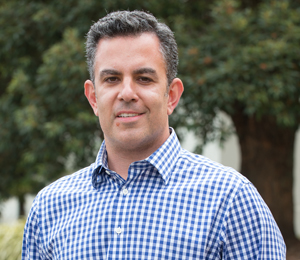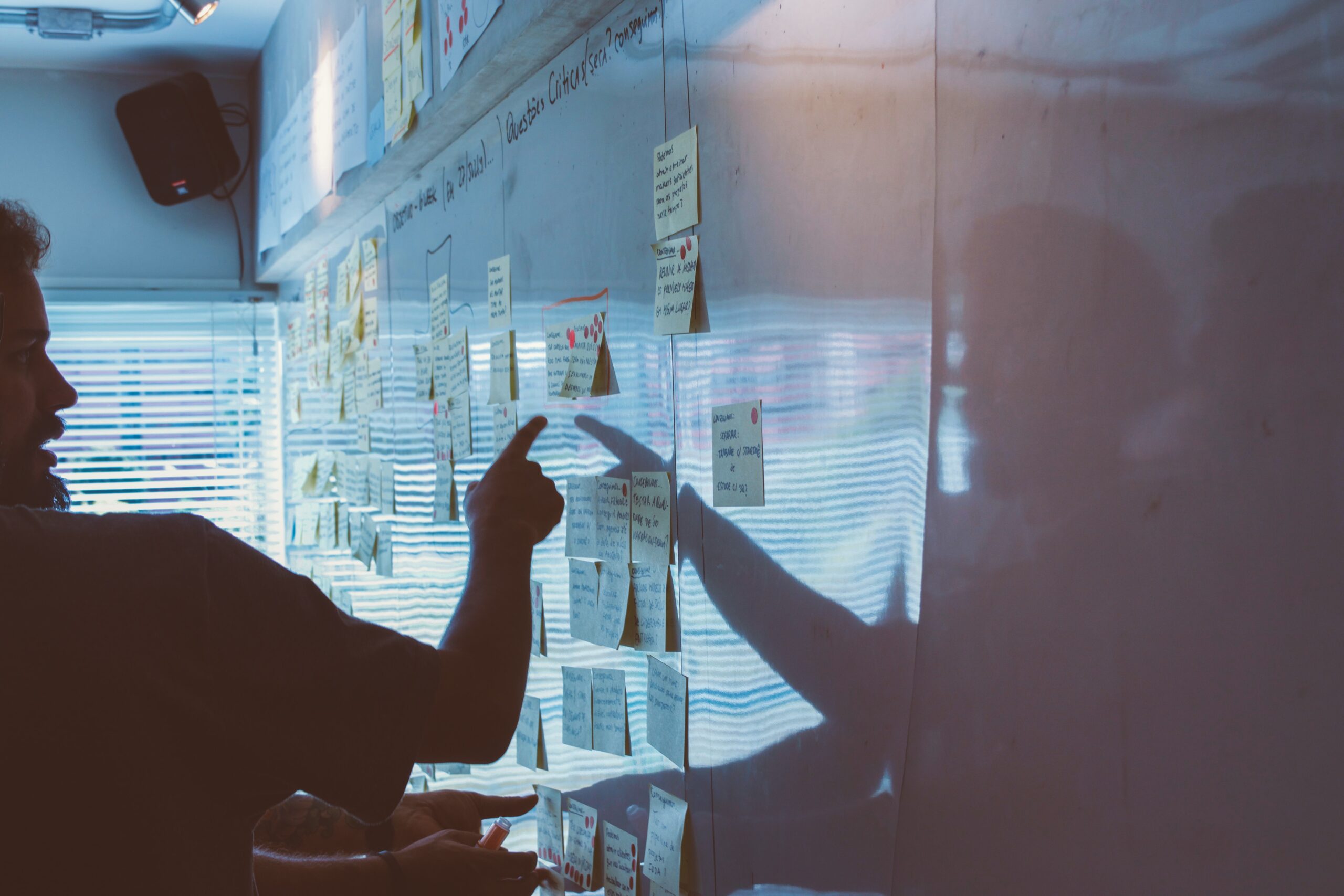 As a FUSE Executive Fellow, Niles Friedman (2015-16) worked with the State of California to establish an Office of Innovation for the California Health and Human Services Agency (CHHS). This new office was created to instill a culture of innovation across the 12 CHHS departments and improve the delivery of services through the adoption of human-centered design approaches, creation of digital services, and insights from data and analytics.
As a FUSE Executive Fellow, Niles Friedman (2015-16) worked with the State of California to establish an Office of Innovation for the California Health and Human Services Agency (CHHS). This new office was created to instill a culture of innovation across the 12 CHHS departments and improve the delivery of services through the adoption of human-centered design approaches, creation of digital services, and insights from data and analytics.
Following his fellowship, Niles went on to serve as a Strategic Advisor with the Los Angeles County CEO’s Office, where he supported the launch of their first Analytics Center of Excellence, in addition to leading a technology strategic planning effort and launching a department-driven innovation function. He is a Founding Executive Advisor with Star Insights, a strategic advisory firm that works with social impact organizations to effectively advise government agencies, foundations, and non-profits in being able to operationalize their missions. Additionally, Niles is a member of the Governments Team with the U.S. Digital Response and leads strategic partnerships with cities, counties, states, and nonprofits through short-term pro bono projects in their response to COVID-19. He also holds several advisory roles and board positions.
How did the FUSE Fellowship impact you?
FUSE came along at a remarkable time for me professionally and personally. In 2015, I was working in the Obama Administration and had an interest to continue work across the local level of government, having been significantly influenced by previous experience working with national and local governments across Africa. At the same time, I, along with a lot of others around the country, was participating in a growing civic technology movement that was gaining scale and momentum. When I heard about FUSE and the fellowship through some White House contacts, I immediately thought it could combine my experiences in government, the private sector, civic technology, and international development.
During my stint working for an international development startup in South Africa, we brought together government, private sector, and nonprofit partners to find solutions that could address the surging HIV prevalence in a patient-centered experience. Through building innovative models for product distribution at the point of care, I could see the practical potential for government agencies, non-profit organizations, and even big pharmaceutical companies to collaborate around a common mission.
Sure enough, during my fellowship with CHHS, I think we demonstrated that a culture shift in how government operates is possible. When “innovation” is grounded and connected to both a bold vision and concrete ways to support staff, you can create real impact and build an internal movement for change. With an amazing champion in then-Undersecretary Mike Wilkening, we worked hand-in-hand with department innovation teams to solve challenges they had in delivering and scaling services, rather than leading with a predetermined idea of what innovation should be. For example, one innovation team looked at how the state could use analytics and tools like Geographic Information Systems (GIS) to better support local governments to increase enrollment in food assistance programs. All of these activities were ultimately focused on building a culture of innovation and collaboration across the agency to be more responsive to the needs of Californians.
The mentorship I received from CHHS leaders and the FUSE Corps family was valuable personally and emphasized how a fellowship role could integrate into agency and department operations in support of a larger strategic movement. In addition, I learned new ways to empower over 200 innovation team change agents and build models that could be applied at scale so that other teams could benefit.
Those achievements were accelerated through a FUSE Fellowship and bringing in someone with a skillset like mine who had never worked within this state agency. Coming in from the outside, I was able to ask lots of questions about why things were done in the way they were, and then bring together innovation teams to figure out new ways to accomplish their goals and serve Californians. The structure of the one-year fellowship also brought a level of discipline and focus that accelerated this change effort. Nevertheless, the agency leadership and department teams with which I collaborated were the essential pieces to sustain the growth of the CHHS innovation movement that continues today.
What are the big challenges on which you are working now, and how has your FUSE experience prepared you to approach them?
Across the last few years, I’ve created roles that allow me to pursue four distinct, but overlapping, areas of interest. These areas build on the work during my FUSE Fellowship, a strong foundation of consulting experience, and over ten years working with international ministries of health, the U.S. federal government, and state and local government.
- Accelerating the impact of local governments, nonprofits, and other social impact organizations. We are in the midst of a great deal of change. Government and private organizations face new challenges, but also opportunities to work collaboratively with partners and scale impact. They need support to help them think more strategically, define and refine their missions, focus on operational priorities, and enable the use of technology to meet community needs. At Star Insights, my role is a combination of working with partners and business development growth for the firm. The founding team was connected through the FUSE network, and a number of our executive advisors are FUSE Alumni.
- Expanding growth of the govtech and digital innovation movements. Governments have dealt with a ton of challenges over the past few years and have had to create ad hoc solutions – but these have also unveiled what is possible and created more willingness to experiment and launch digital innovation functions and offices. As we were all going into pandemic lockdown in March 2020, I joined a webinar about this idea of how local technologists around the country (now more than 7000 strong!) were raising their hands to help government and nonprofits implement rapid responses to crisis and critical service needs through a new organization called U.S. Digital Response (USDR). It turned out that I knew some of the cofounders, and so now I am part of the Governments Team, where I can directly engage on projects with our government and nonprofit partners and collaborate with USDR teams to better understand community needs, figure out how to scale solutions, and generate more awareness of what has been accomplished through more than 300 completed projects.
- Government partnering with startups in their communities. I worked with Los Angeles County to design and launch the Technology Innovation Challenge, through which the County awarded $1.4 million for bold, scalable, and human-centered ideas to produce innovative solutions for homeless families and individuals. This competition was a new opportunity for companies and startups that hadn’t worked with a government as large as the County to bring their solutions forward. Now, through my Advisor role with the nonprofit accelerator CivStart, I can continue to invest time and build an environment for startups to thrive across the state and local government market.
- New careers in public health. I have a Master of Public Health degree and have spent years across the field. COVID-19 has brought a real resurgence of interest in public health, both from government and from potential public health professionals. What are our schools of public health doing now to meet the moment and also prepare for the next pandemic? I recently joined the Alumni Association Board of the Rollins School of Public Health at Emory University to support the school adapt and innovate on new career pathways across this field for alumni and improve awareness for incoming students.
What are you hoping to achieve in the next 6-12 months?
Right now, I am focused on building new partnerships with social impact organizations through my role with Star Insights and working directly with nonprofits, startups, and governments through advisory and board roles. Voter protection work has also been a passion of mine, and so in 2020 I jumped at the opportunity to support state-level voter protection teams for the Biden Presidential Campaign. Given the new rules being put in place across some states, I’m evaluating how I can stay actively involved with voter protection organizations and activities at the local level.
Related work and news:
CHHS Gov: Instilling a Culture of Innovation in Government
ESRI: The Public Sector Borrows Business Practices for Efficiency, Greater Good
Techwire: Commentary: Back to Basics in Gov Tech Innovation
New America CA: Reimagining Work and our Workforce Through Mobility and Digital Innovation
GovTech: State of GovTech 2021
Photo by Startaê Team on Unsplash
